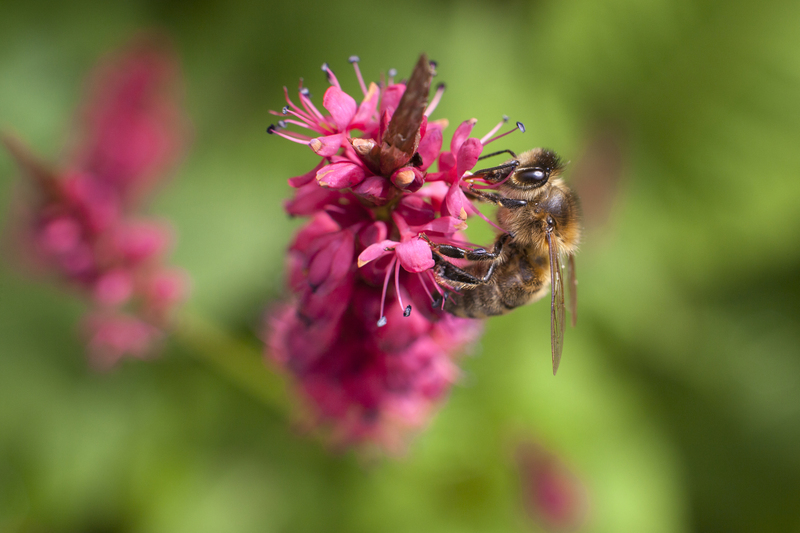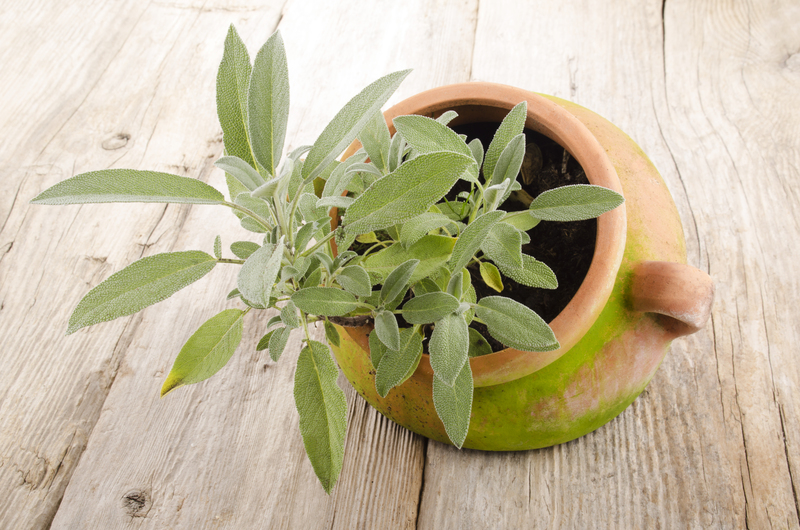Lawn Success Simplified: Beginner Tips for Year-Round Green
Dreaming of a lush, envy-inducing green lawn all year long? You're not alone! A healthy, vibrant lawn boosts your home's curb appeal and offers a relaxing outdoor haven. But if you're new to lawn care, achieving that perfect, green turf can seem daunting. The good news? Lawn success is less complicated than you might think. With simple, strategic steps, anyone can enjoy a beautiful lawn in every season.
Understanding Your Lawn: The Foundation of Lasting Green
Before diving into treatments and equipment, start by knowing your lawn. Key factors--like grass type, soil quality, and local climate--determine the right approach for your yard. Here's how to set yourself up for success:
1. Identify Your Grass Type
- Cool-season grasses (like fescue, bluegrass, and ryegrass) flourish in northern climates. They peak in spring and fall.
- Warm-season grasses (like bermuda, zoysia, and St. Augustine) thrive in southern and hot regions.
Why does this matter? Each grass type has different water, mowing, and fertilizing needs.
2. Test Your Soil
Soil health is the unseen hero behind a thriving yard. Use a basic soil test kit (available at garden centers) to check:
- pH levels - Most grasses prefer a pH between 6.0 and 7.0
- Nutrient balance - Assess nitrogen, phosphorus, and potassium levels
- Drainage quality
Healthy soil is the foundation for year-round green lawns. Amend as needed with lime, sulfur, or organic matter to achieve the right conditions.

Watering Wisely: Give Roots What They Need
Overwatering and underwatering are both common beginner pitfalls. A consistent, efficient watering routine is key to lawn maintenance success.
Tips for Smart Watering
- Water deeply, but less frequently. Aim for 1-1.5 inches per week, either from rainfall or sprinklers.
- Early morning watering (before 10am) reduces evaporation and prevents fungal diseases.
- Use a rain gauge or empty tuna can to track irrigation consistency.
- Adjust your schedule based on weather--more during dry spells, less during rainy periods.
- Consider investing in a water-efficient sprinkler or smart irrigation system.
Remember: Letting the surface dry between watering encourages deep, strong roots and a resilient, green lawn.
Mowing Like a Pro: Promote Healthy Growth
Mowing isn't just about appearances--it's vital for vigorous growth. Done right, it encourages thicker turf and helps outcompete weeds.
Best Mowing Practices for Lawn Success
- Follow the one-third rule: Never remove more than one-third of the grass blade at a time. Cutting too short stresses the grass.
- Keep mower blades sharp. Dull blades tear grass, leading to brown tips and disease risk.
- Change directions each mow. Avoid ruts and create more upright growth by alternating mowing patterns.
- Leave clippings (if short) on the lawn. They act as natural fertilizer, returning valuable nutrients to the soil.
Mowing frequency depends on your grass growth rate and seasonal patterns. Generally, mow once a week during peak growth, and less often in cooler/dormant months.
Fertilizing for Lasting Green
Fertilizer is like a multivitamin for your lawn--but timing and formulation matter! Too much or the wrong application can burn your grass or worsen weed problems.
Beginner Fertilization Tips
- Choose a balanced, slow-release fertilizer (look for products labeled 20-5-10 or 16-4-8, for N-P-K ratios).
- Apply in spring and fall for cool-season grasses; late spring and late summer for warm-season types.
- Follow package instructions closely to avoid over-fertilizing.
- Water after fertilizing to help nutrients absorb into the soil.
- Consider organic options like compost or manure for natural lawn care.
Regular feeding keeps your grass thick, green, and competitive against pesky weeds.
Combatting Weeds, Pests, and Diseases
Even the most diligent lawn owner will face unwelcome invaders at some point. Luckily, most issues can be handled with simple, eco-friendly steps.
Weed Management for Beginners
- Mow high to shade out weed seeds and discourage their growth.
- Use a handheld weeder for isolated weeds.
- Pre-emergent herbicides prevent major outbreaks--apply in early spring and late summer.
- Promote thick turf with proper watering and fertilization--healthy lawns naturally fend off weeds.
Dealing with Lawn Pests and Diseases
- Check for signs of grubs, chinch bugs, or fungus (discoloration, thinning, or odd patches).
- Remove thatch buildup (the spongy layer between soil and grass) with a rake or dethatcher in spring or fall.
- Use targeted pesticides as a last resort--integrated pest management strategies are safer for kids, pets, and pollinators.
- Keep your mower and tools clean to minimize disease spread after cutting.
Quick action and routine inspection keep your lawn healthy and green--no matter the season.
Aeration and Overseeding: Building a Thicker, Lusher Lawn
Is your grass looking thin, patchy, or compacted? Two simple techniques can restore vitality and help you achieve true lawn success:
The Why and How of Lawn Aeration
- Aeration relieves compacted soil, improves water penetration, and boosts root growth.
- Use a core aerator (rented from garden centers) in either spring or fall when your grass is actively growing.
- Focus on high-traffic areas or where water pools after storms.
Overseeding for Thicker Turf
- Scatter new grass seed after aerating to fill bare spots and increase density.
- Choose a seed blend suited to your existing grass and climate.
- Keep the soil consistently moist until seeds germinate and seedlings establish.
Annual aeration and overseeding are the secrets behind the greenest lawns in your neighborhood!
Year-Round Care: Unlocking Lawn Success in Every Season
Every season brings its own challenges--and opportunities. Here's your simplified, seasonal guide to a green, healthy lawn all year long:
Spring Lawn Care for Beginners
- Rake up debris and dethatch to allow air and nutrients in.
- Apply pre-emergent weed control before weeds sprout.
- Begin regular mowing and adjust the mower for your grass type.
- Fertilize with a balanced product for leafy, green growth.
Summer Lawn Success Tips
- Raise your mower height--taller grass shades soil and conserves moisture.
- Water deeply in the early morning.
- Keep an eye out for pests or disease symptoms.
- Avoid heavy fertilization during extreme heat.
Fall Lawn Maintenance Advice
- Rake leaves to prevent smothering grass.
- Aerate and overseed for lawn rejuvenation.
- Apply a fall fertilizer to support winter hardiness.
- Gradually lower your mowing height for the last cuts of the season.
Winter: Simple Success Strategies
- Avoid heavy traffic on frozen grass to prevent damage.
- Keep paths clear of salt and chemicals, which can leach into your lawn.
- Prepare equipment for spring by cleaning and sharpening mower blades.
Consistent, thoughtful care keeps your grass greener and healthier every month of the year!
Essential Tools and Simple Lawn Care Products for Beginners
You don't need a shed full of gadgets to succeed. With a handful of basic tools, any beginner can nurture a lush, green yard:
- Quality lawn mower (push or self-propelled)
- Hose, sprinkler, or irrigation system
- Soil test kit
- Rake (for leaf and thatch removal)
- Hand or broadcast spreader (for seed and fertilizer)
- Hand weeder and pruners
As you gain experience, you may add extras like a dethatcher, core aerator, or smart irrigation timer for more advanced lawn care.

Frequently Asked Questions: Lawn Success for Beginners
1. How do I know if I'm overwatering or underwatering?
Most lawns prefer a weekly soak, not daily sprinkles. Check by sticking a screwdriver into the soil--if it slips in easily 6 inches, you're watering enough. Brown tips and squishy soil = too much; dry, brittle blades = too little.
2. How soon will my lawn turn green again?
With consistent care, most grasses bounce back within 2-4 weeks as temperatures warm and spring fertilizer kicks in. Warm-season grasses may take longer, especially if overseeded in autumn.
3. What's the easiest way to get rid of weeds?
The best method is thick, healthy grass! Spot-treat visible weeds by hand. Use pre-emergent weed control in spring and fall to prevent major outbreaks.
4. Is organic lawn care as effective as chemical care?
Absolutely! Organic fertilizers (like compost) feed soil microbes, leading to stronger, greener lawns. Results may take a bit longer to appear, but they're safer for families and pets.
Conclusion: Achieving Lawn Success is Simpler Than You Think
Consistency is the heart of a year-round green lawn. By understanding your grass, watering strategically, mowing carefully, and keeping up with seasonal needs, even absolute beginners can enjoy a thriving, beautiful yard.
Remember: progress, not perfection. Every lawn faces challenges, but with these simplified success tips, you'll be amazed how soon your yard turns into the lush, green oasis of your dreams.
Get started today--and watch your beginner lawn success story unfold, season after season!